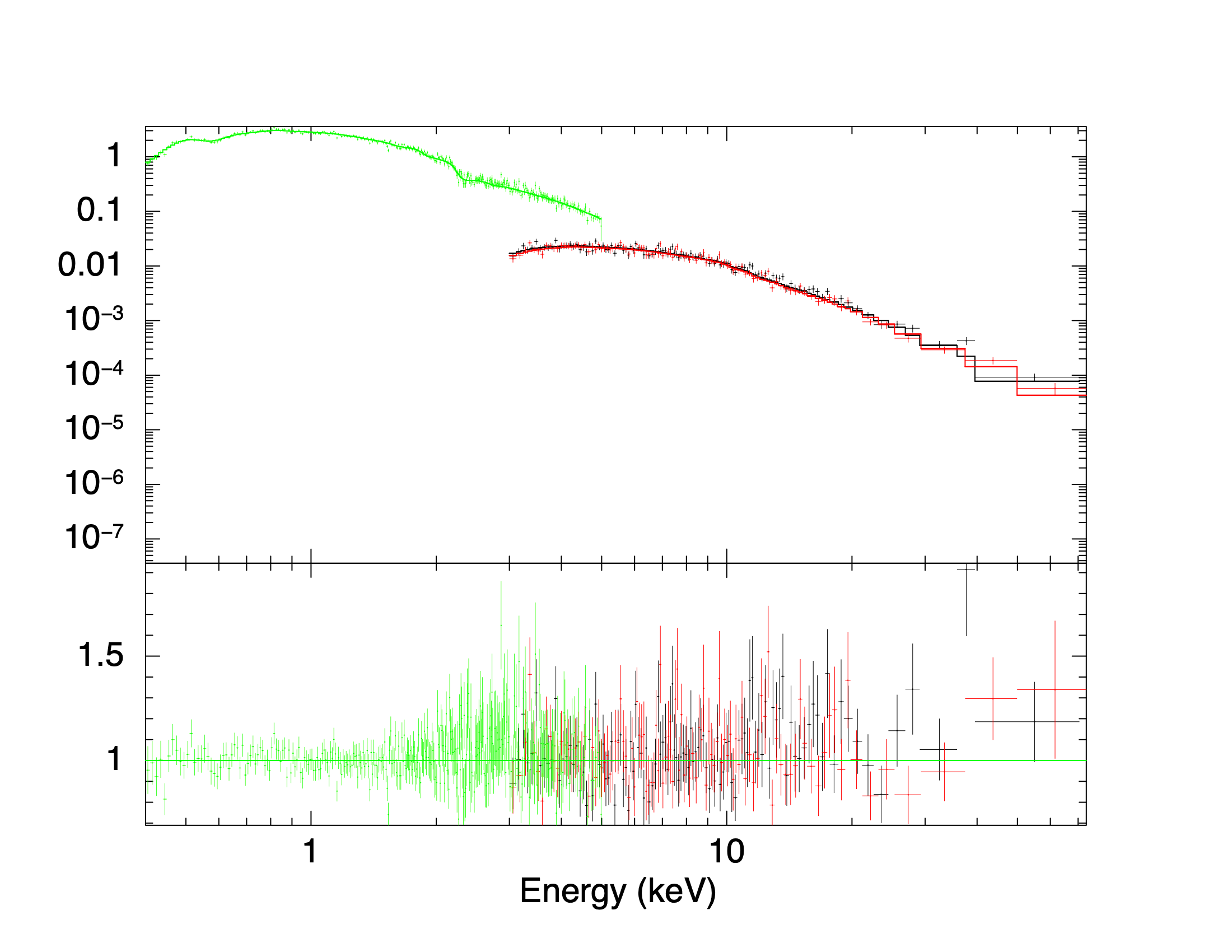NICER / ISS Science Nugget
for September 23, 2021
NICER collaborates on a spectral and variability study of the blazar prototype BL Lacertae
"Blazar" is the name given to a class of objects, the cores of distant galaxies, that emit jets of highly relativistic particles in our direction. Like other active galactic nuclei (AGN), blazars are powered by steady accretion of matter into the supermassive black holes that appear to anchor most galaxies. Our view "down the barrel" of a collimated jet perpendicular to the accretion disk results in bright, highly variable emission across the electromagnetic spectrum, from radio through gamma-rays. Once thought to be a variable star, BL Lacertae was among the first to be recognized, in the early 1970s, as an AGN and is now the eponymous prototype of the blazar class.
In the fall of 2020, the original BL Lac exhibited a period of strong gamma-ray flaring, tracked with NASA's Fermi observatory. A paper by F. D'Ammando (INAF, Italy) - accepted for publication this week in the peer-reviewed Monthly Notices of the Royal Astronomical Society (UK) - describes a campaign of X-ray observations during the gamma-ray flaring activity with NICER as well as with NASA's Swift and NuSTAR telescopes. In soft X-rays, NICER recorded brightness variations (see figure below left) by a factor of two on timescales of a few thousand seconds, and by ~15% over intervals as short as 240 seconds. Given such variability, speed-of-light arguments constrain the size of the emitting region to be 10-30 times the radius of Earth's orbit around our Sun; in other words, the parts of the supermassive black-hole's jet responsible for this emission would fit approximately within our Solar System.
Through coordination of observing schedules, the NICER and NuSTAR observations overlapped, enabling analysis of a single, simultaneously acquired broad-band spectrum (figure on the right below). A model requiring two power-law components of different slopes, with a break between them at about 2.7 keV, best describes the joint spectrum, consistent with expectations for different mechanisms of radiation from the particle flows: synchrotron radiation at low energies (the lower half of NICER's band) and inverse-Compton at high energies. Finally, NICER's data contributed the first robust measurement of the density of absorbing interstellar gas within our own Galaxy in the direction of BL Lac.


Figure: Left: Countrates obtained from BL Lacertae by NICER in the 0.4-5 keV band (black circles) and by NuSTAR in the 3-79 keV band (red triangles) during 11-12 October 2020.
Right: NICER and NuSTAR spectra (upper panel) and residuals (bottom panel) of BL Lacertae collected simultaneously on 11-12 October 2020, fitted in the 0.4Ð79 keV energy band with a broken power-law model. Black, red, and green points represent NuSTAR FPMA, NuSTAR FPMB, and NICER data, respectively.
<< Previous
Main Index
Next >>